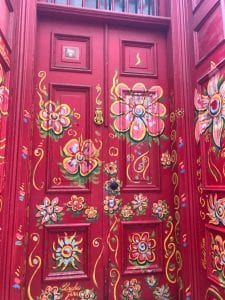Traveling through Valparaíso was a beautiful experience from start to finish. It was awe-inspiring to see the many architectural styles within such a short distance from each other. We were enlightened with views of pretty houses on a hill all leading to the big blue ocean.
However, there was this emptiness to the portion we walked through. It kept nagging me through the walk that the only people we saw were vendors, waitresses, and other tourists. Not to say that it was necessarily a bad feeling, but at some point I had to ask if I was walking through a film set. Most of the houses appear to be houses in terms of typology but had a lot of variance in the programs. It might be unreasonable to expect a majority of people to be able to afford the maintenance for such a house. Yet, at the same time I think houses built should serve their purpose as houses and not as vessels to drive the tourism market.
One of the main reasons I believe it only to be geared toward the tourism market is the emphasis placed on appearances. There were many houses empty and vacated that were being renovated to have the appearance of vibrancy even if it did not necessarily start that way. I am a fan of the appearance of the city, but I do believe it is similar to Santa Monica where zoning code drives a lot of the decisions of the outer appearance. In my opinon, giving individuals the opportunity to control their facades would be preferable. Even though the houses were eye-catching, I felt myself more moved by the murals throughout the city. That was the most authentic experience for me personally. The same energy used to paint the intricate work could be applied to the surface treatment of the facades.



I had these same thoughts while strolling through Valparaiso. While the city was vibrant and beautiful, I was disheartened to not see many locals walking around. While I understand that history needs to be preserved, thus the preservation of the facades, I do think this must be a tough thing for the locals to have to keep up with and that their needs should come first. I also thought that the murals are what made Valparaiso come to life. It was fun to see some of the messages people were wanting to send or how the locals wanted Valparaiso to be represented through art.
Aisha, I think you bring up a really good point here that I think is relevant to many cities looking to reguvinate after an industrial past. How can cities modernize their economy, maintain their historical past, and not push out historical residents? It’s a hard question, and I think from what we saw, Valparaiso’s answer was to modernize their economy through tourism, keep strict laws on building facades but then cater only to tourists, not their locals. It was interesting to see how in some of the less historically ‘desirable’ places there was a lot of walking activity from locals but the more you got into the UNESCO area that activity decreased.